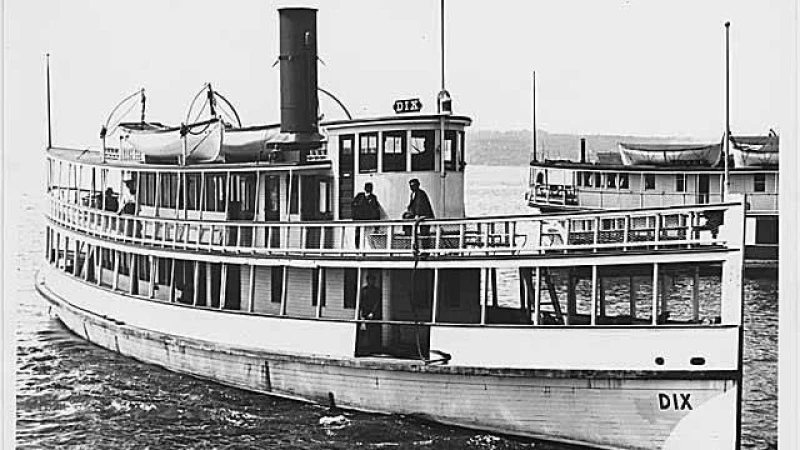Steamship SS Dix Located in Elliott Bay
A steamship that sank over a century ago in what's been called the "worst maritime disaster" in Seattle history has been definitively located, a group of underwater explorers announced.
Exploration company Rockfish said Thursday that the wreck of the SS Dix had been identified in Elliott Bay off of Seattle's Alki Point, KIRO Newsradio reported. The roughly 100-foot-long wreck sits upright on the bottom in 600 feet of water, the company said.
Built in 1904, the SS Dix was a steamship that was part of the so-called Mosquito Fleet — small wooden ships that transported passengers in the area before highways and bridges were constructed, according to the Puget Sound Maritime Historical Society. The boat made 19 round trips daily across Elliott Bay to Alki Point, the society said.
On Nov. 18, 1906, the Dix collided with a much larger steamer called the Jeanie, killing at least 42 passengers who were stuck on the lower deck of the Dix, according to KIRO Newsradio. About 35 people were rescued.
A front-page headline in the Seattle Star on Nov. 19, 1906, declared: "Forty-two lives lost on the wreck on the steamer Dix off Alki Point," adding that women and children were among the victims.
The online forum Shipwreck World and the OceanGate Foundation have referred to the sinking of the Dix as "the worst maritime disaster" in the history of Puget Sound and Seattle.
According to the Seattle Post-Intelligencer, maritime historian John Kelly stated in 2006, "They didn't have a chance. It was a major catastrophe. There hasn't been anything like it since."
"Respected as a grave site"
According to Jeff Hummel and Matt McCauley, the men who claim to have found the ship, the explorers were initially confused by the orientation of the vessel on the seafloor. They have definitively located the SS Dix, as reported by KIRO Newsradio. Hummel and McCauley were also credited with discovering the 1875 wreck of the SS Pacific off Washington's coast.
Hummel, a board member of the Northwest Shipwreck Alliance, revealed that the "aha moment" for identifying the SS Dix actually occurred in 2015.
"The vessel has a 'canoe stern,' which comes to a point, and so it looks like a bow," Hummel explained. "So everyone thought that that stern was actually the bow. And so when you compare it to the photos [of the SS Dix] nothing lines up."
"Until you flip it around," Hummel continued. "And you realize that the bow, which is kind of crushed a little bit, is what people are calling the stern. And when you do that, you flip it around, then you see that all of the features in the photo, the major structural items all line up perfectly, and it is the Dix."
Hummel stated that his team has kept their findings a secret since 2015 and has not retrieved any items from the shipwreck. He expressed the desire to work with state lawmakers to protect the site as a "grave site" for the victims, according to KIRO Newsradio.
We believe it is crucial to show reverence for the ship and the individuals who have been lost, and we would appreciate the implementation of a legal mechanism to safeguard it," stated Hummel during an interview with KIRO Newsradio. "We would like to witness the enactment of permanent legislation by the state legislature to conserve and protect this specific location, ensuring that it remains untouched and respected as a burial site for future generations."







